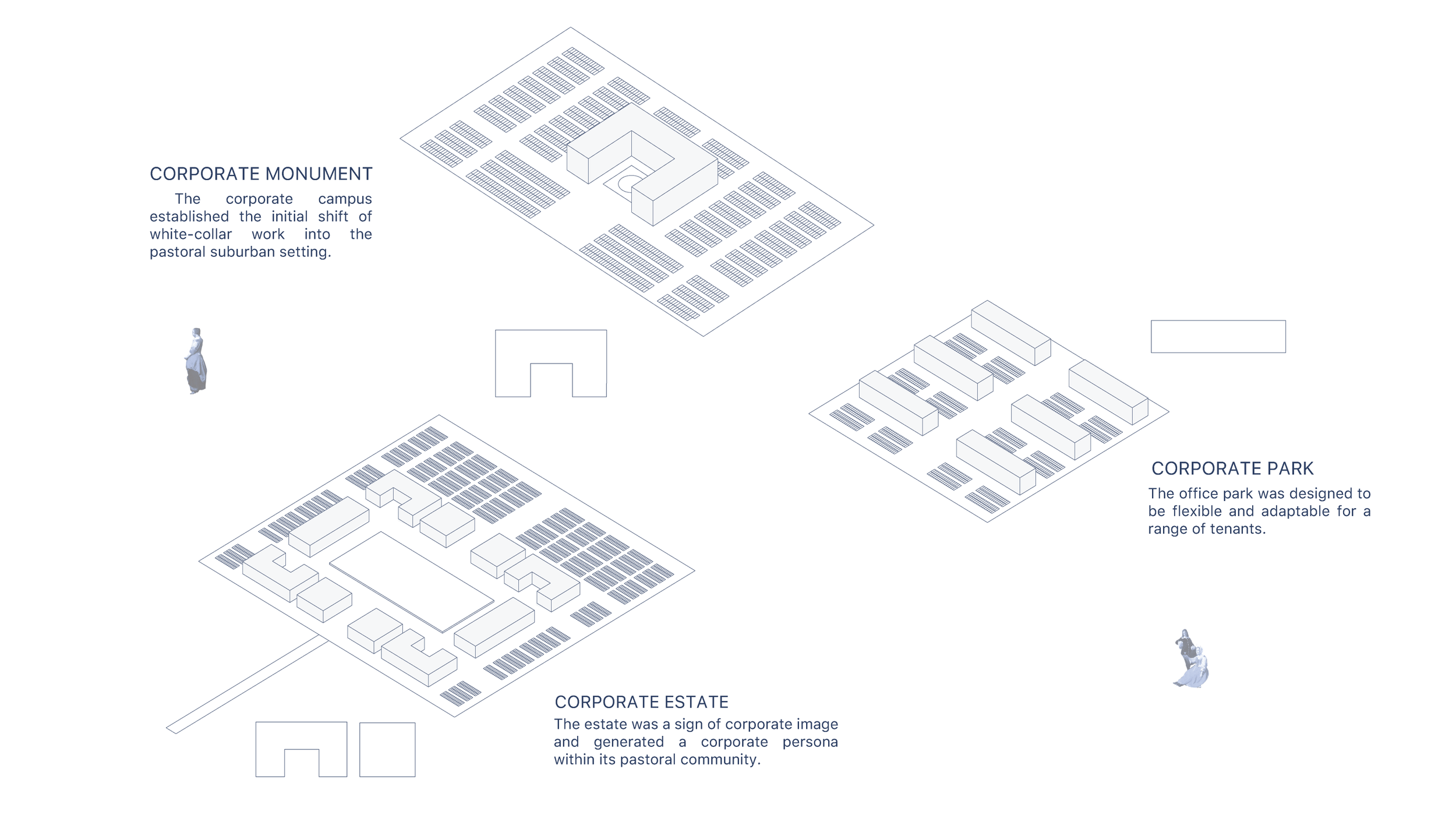- MASTERS THESIS -
THE FUTURE OF WORK is apple, amazon, + facebook
What we view as the future of work is being determined by large tech companies located primarily in the Silicon Valley. These workplaces, however, have evolved from a collection of typological models that in the 1950’s redefined the American workplace as one of research, amenities, and control. A workplace not in the city but in the suburbs. These are known as the corporate campuses.
The phrase “corporate campus” speaks of the movement of industries from the inner city to the pastoral settings of suburbia. With the end of World War II , the rise of the car, and a need for housing, huge populations left their city dwellings for suburban picket fences. The inner cities had become “too black, too unruly, too expensive and, thanks to the rise of the car, too congested” (Tom Wilkinson “Typology - Corporate Campus”, The Architectural Review, 2016).
The corporate campus first emerged in the 1940s, after World War II, as an instrument to re-conceptualize research management, attract scientists from universities, and give corporations the appearance of intellectual power.The corporate campuses contained office and laboratory spaces focused in a pastoral setting, surrounded by parking and an enclosed driveway.
During and after World War II, vast sums of money flowed into companies that promoted research and innovation especially in technology. These research institutions developed into some of the most influential American businesses - IBM, General Life Insurance, AT&T, and General Electric.
The architects of the time also played a key role in developing new ideas for the workplace. Eero Saarinen oversaw the design and implementation many of these new corporate campuses for IBM, GE, and AT&T . These “industrial versailles” used the campus model for organizing space and people (Scott G. Knowles and Stuart W. Leslie. “"Industrial Versailles": Eero Saarinen's Corporate Campuses for GM, IBM, and AT&T”. University of Chicago Press. 2001).
Through the ideas of powerful architects, the era of the automation, and the desire for order, corporate campuses were created, dotting pastoral landscapes across the country. These campuses can be broken down into three main models of typology - “Corporate Monument”, the “Corporate Estate”, and the “Corporate Park”.
TYPOLOGICAL MODEL
The Industrial Versailles Complex
The spatial makeup of the different tech campuses starting from Eero Saarinen's Bell Labs to Apple's new Headquarters. Apple's new campus spans 1500 feet. Despite adopting new technology, Apple's campus takes up more space than those in the 1950's.
The psychoanalytic lens of "the setting" refers to the analysis of the "main conditions of treatment" within a patient. This framework can be applied to analyze both the built environment and the cultural context of tech HQs. It can also be used to create a framework in which to "treat" these conditions. The setting can be seen as both a psychological construct and a physical construction, connected to both space and time, rooted in geography and history.
Tech companies' affect the external conditions of their cities in terms of air pollution, congestion, and the exhaustion of institutional and natural resources. Tech companies also create internal conditions that affect the diversity of the workforce and the balance of life and work.















